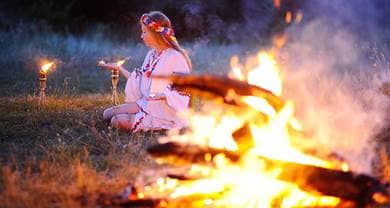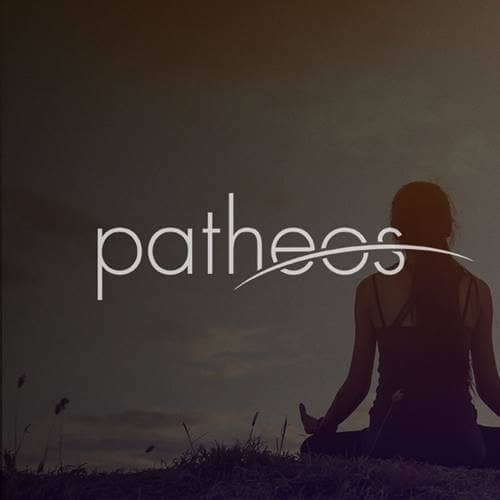- Trending:
- Pope Leo Xiv
- |
- Israel
- |
- Trump
- |
- Social Justice
- |
- Peace
- |
- Love

RELIGION LIBRARY
Paganism
Sacred Narratives
In the 1960s, researcher James Lovelock formulated what has come to be known as the Gaia Hypothesis, which holds that the biological and physiological systems throughout the earth function in such a closely interactive and self-regulating way that it is plausible to regard the entire earth ecosystem as a single entity - a "super-organism," as it were. While not universally accepted in the scientific community, this concept - from which it is a short jump to the idea of the earth as a single sentient being - has become one of many stories, both ancient and modern, to be embraced by various elements within the modern Pagan community. For many Pagans, not only is the Gaia Hypothesis a compelling story, but even its name is taken literally: Gaia, Greek Goddess of the Earth, is she whom many Pagans adore when they revere the earth.
Contemporary Paganism, however, is more than just a spiritualized approach to certain scientific theories or hypotheses. Woven throughout the various expressions of magical, polytheistic, nature-centered, and goddess-oriented spiritualities are a rich array of myths, both ancient and modern, that create meaning and spiritual identity for practitioners. Although adherents tend to be sophisticated and recognize myth as a category separate from history, approaches to the sacred stories vary widely in the larger Pagan community. Myth can be understood as meaningful metaphor, as stories imbued with symbolic truth, and even as factual records of the exploits of spiritual heroes and deities. But because Pagans typically reject the idea of prescribed belief or dogma, sacred stories - like all other elements in modern Paganism - may be interpreted by each individual according to her or his own values and worldview.
What do the myths say? Ancient myths, from cultures around the world, tell the stories of gods and goddesses, ancestral heroes and heroines, and other entities (such as friendly or unfriendly spirits, fairies or elves, or animal and plant spirits). While European myths are favored among European and North American Pagans, other sacred stories from around the world are often embraced by various Pagans, instead of or in addition to the European sources; naturally, individuals of a certain ethnicity will often orient the mythic dimension of their practice to the sacred stories of their own ancestors. But many Pagans embrace mythologies for which they may have no ancestral ties whatsoever. In the Celtic community, people of Welsh, Scottish, Irish, or other Celtic heritages may have an ancestral "right" to Celtic mythology, but others - known as "cardiac Celts" (Celts only by virtue of the longing in their hearts) - are just as likely to embrace Celtic myth and make it their own.
While some Pagans insist that mythologies from different cultures should not be mixed in the pursuit of spiritual practice, many others freely integrate myths from around the world into their rituals and devotions. This practice is known as "eclectic" Paganism, and results in a uniquely colorful celebration of various gods and goddesses from all corners of the earth. Thus, it is possible to attend a Wiccan circle where the Hawaiian Goddess Pele is venerated alongside the Roman God Vulcan, or an eclectic Pagan gathering in which the Cherokee Goddess Selu is invoked along with the Irish God Lugh.
Along with the eclectic intermingling of sacred stories from around the world, some Pagans (including many Wiccans) affirm that "all the gods are one God, and all the goddesses one Goddess" - meaning that the many different deities of world mythology can essentially be understood as one archetypal God and one archetypal Goddess. Others, however, reject this idea as a purely modern innovation, and so have a more truly polytheistic approach to mythology: seeing the spirit world as populated by many different gods and goddesses, rather than by a single, universal pair of deities.
Although classical mythology provides many of the gods and sacred beings revered by Nature Religionists, literary sources - from the medieval Arthurian legends to J.R.R. Tolkien's Middle Earth - inspire some practitioners as well. Even though these stories are not mythological in a technical sense, their deeply archetypal symbolism and rich narrative enable them to be approach as functional myths for those who are willing to read them in such a way. Likewise, folklore (which, arguably, often represents mythology in a degraded form) can contribute to Pagan sensibilities and values.
All of this is un-systematic and nearly impossible to summarize effectively. Few if any Pagans rely on their sacred stories to determine what to believe; rather, myth is celebrated as an evocative tool for inspiring the religious and spiritual imagination. Even Pagans who speak about praying to a particular god or goddess will sometimes clarify that they understand these deities as symbolic or archetypal. A prayer to Aphrodite, the Goddess of Love, may for many Pagans be simply a symbolic ritual means of accessing unconscious (or, perhaps, transpersonal) abilities to give and receive love. Others, however, may be more literal, accepting the gods and goddesses as factually real.
Not all Pagans are devoted to mythological deities or spirits; some limit their religious practice to the veneration of nature. However, mythologies from around the world often emerged in cultures with horticultural or agricultural economies; thus, such myths generally have strong fertility or natural imagery. Various deities are associated with various elements of the natural world: the sky, the sea, the earth, trees, rivers, forests, the hunt, grain, and so forth. Engaging in religious practice informed by such natural imagery can be a direct way of cultivating a rich spirituality of devotion to the earth (i.e., Gaia).
Study Questions:
1. What is the Gaia Hypothesis, and why is it attractive to Pagans?
2. How are myths utilized within the Pagan community?
3. What is the relationship between myth and folklore? How is each used?










